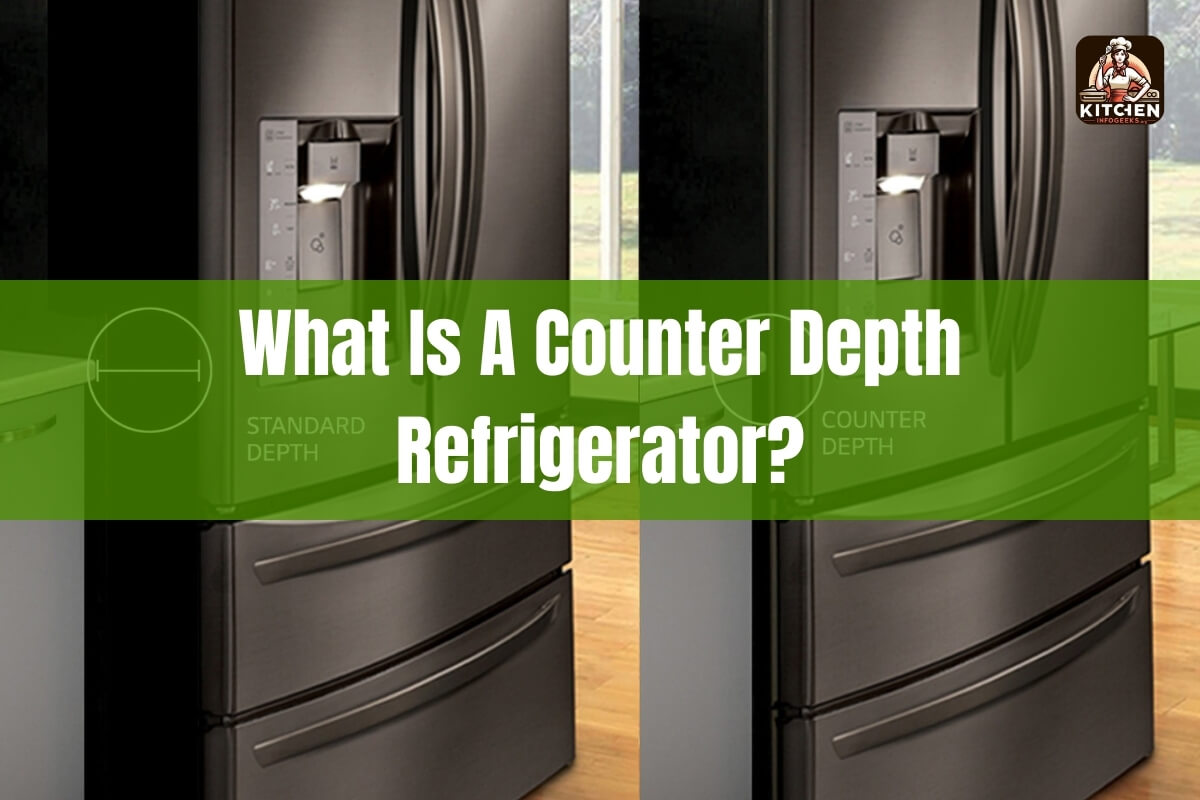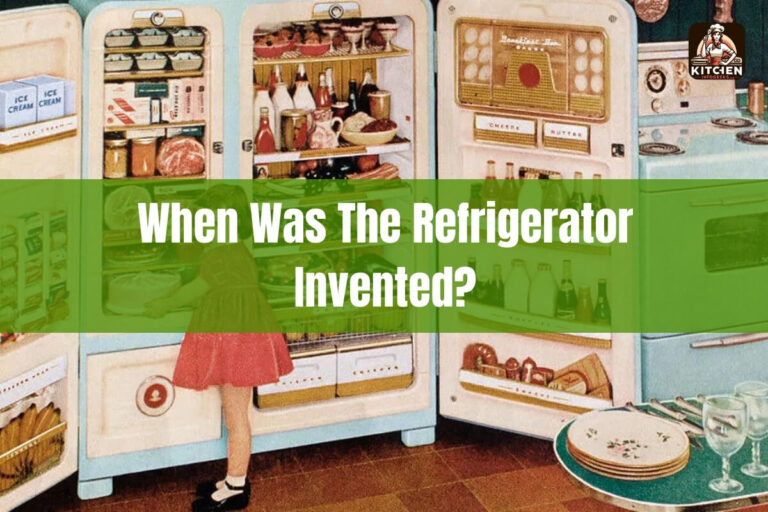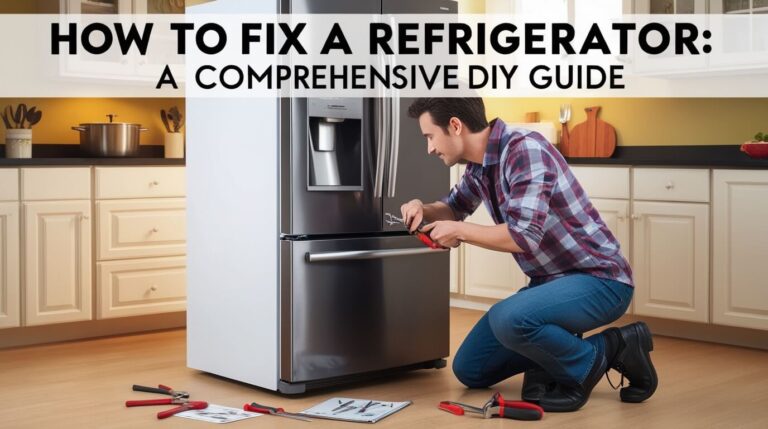
A counter depth refrigerator is a kitchen appliance designed to sit flush with your kitchen cabinets and countertops, providing a seamless, built-in look. This article explores what makes a counter depth fridge unique, how it compares to standard models, its key advantages, and tips for selecting the right one for your kitchen.
Understanding Counter Depth Refrigerators
What is “Counter Depth”?
“Counter depth” refers to the distance between the front of your kitchen countertops and the back wall or backsplash. Most standard kitchen countertops are around 24-25 inches deep. Counter depth refrigerators are designed to match this depth, typically ranging from 24-30 inches deep. This allows them to sit virtually flush with your cabinetry and countertops, creating a sleek, integrated appearance in your kitchen.
Counter Depth vs. Standard Depth
The main difference between counter depth and standard depth refrigerators is, well, the depth. Standard refrigerators are usually 30-36 inches deep, meaning they stick out significantly past the edge of most kitchen counters. In contrast, counter depth models are shallower, only extending 24-30 inches from the wall.
To make up for the reduced depth, counter depth fridges are often a bit wider and taller than standard models. This helps them maintain comparable storage capacity, even with the smaller footprint. You may sacrifice some of the total cubic feet, but counter depth refrigerators are engineered to provide ample space for your food and beverages.
Key Benefits of Counter Depth Refrigerators
Streamlined, Integrated Look
The primary appeal of a counter depth refrigerator is the way it seamlessly blends into your kitchen design. By sitting flush with your cabinets and countertops, it creates a built-in, custom look that many homeowners find visually appealing. This streamlined aesthetic works especially well in modern, minimalist kitchens.
Improved Kitchen Functionality
Beyond just appearances, counter depth refrigerators offer some practical benefits too. Their reduced depth means you won’t have to worry about the fridge doors bumping into an island or other nearby objects when opened. This extra clearance can make navigating your kitchen easier, especially if you have a smaller space.
Additionally, the shallower depth puts frequently used items within easier reach, without having to dig through the back of a deep fridge. This can simplify meal prep and make your kitchen workflow more efficient.
Space-Saving Design
While counter depth models may sacrifice a bit of total storage volume compared to standard depth, they make up for it with a more space-conscious footprint. The reduced depth, combined with a taller and/or wider body, allows counter depth fridges to provide comparable capacity in a more compact, flush-mounted package.
This can be a game-changer in tight kitchens where every inch of floor space is precious. The sleek profile of a counter depth fridge helps free up valuable floor area that would otherwise be taken up by a bulkier standard model.
Measuring for a Counter Depth Refrigerator
Before purchasing a counter depth refrigerator, it’s essential to take accurate measurements of your kitchen space to ensure a proper fit. Here are the key dimensions to consider:
Countertop Depth
Start by measuring the depth of your kitchen countertops, from the wall to the front edge. This will give you the target depth for your counter depth refrigerator, which should generally fall in the 24-25 inch range.
Don’t forget to account for any backsplash or other features that may affect the overall countertop depth. You’ll want to leave about an inch of clearance between the back of the fridge and the wall for proper ventilation.
Cabinet Cutout Width
Next, measure the width of the cabinet cutout where your refrigerator will be installed. Counter depth models are often a bit wider than standard depth fridges, so you’ll want to subtract about an inch from this measurement to allow for proper air circulation on the sides.
If one side of the refrigerator will be next to a wall, leave an extra 2-1/2 inches of clearance on that hinge side to ensure the door can open fully.
Cabinetry Height
Finally, measure the height from the floor to the bottom of any upper cabinets that will be above the refrigerator. Subtract about 1/2 inch from this dimension to ensure adequate airflow at the top of the fridge.
Keep in mind that counter depth refrigerators are often a bit taller than their standard depth counterparts, so be sure to double-check the specific model dimensions.
Choosing the Right Counter Depth Refrigerator Style
Counter depth refrigerators come in a variety of styles to suit different kitchen layouts and personal preferences. The four main options are:
French Door
French door counter depth refrigerators feature two side-by-side doors that open outward, revealing a single large interior space. This design can work well in smaller kitchens, as the doors require less clearance to swing open compared to a traditional single-door fridge.
Side-by-Side
Side-by-side counter depth models have two tall, narrow doors that each span the full height of the refrigerator. One side houses the fresh food compartment, while the other contains the freezer section.
Top-Freezer
More of a traditional layout, top-freezer counter depth fridges have the freezer on top and the refrigerator section below. The doors can open to the right or left depending on the model.
Bottom-Freezer
The reverse of a top-freezer, bottom-freezer counter depth refrigerators place the freezer drawer or door at the bottom, with the refrigerator compartment on top. This can make frequently accessed items easier to reach.
Whichever style you choose, be sure to carefully measure your available space and compare the dimensions to ensure a proper fit. Counter depth refrigerators may be a bit taller, wider, or have other size variations compared to standard models, so double-checking the specs is crucial.
Conclusion
In summary, a counter depth refrigerator is a kitchen appliance designed to sit flush with your cabinetry and countertops, providing a sleek, built-in look. While they may sacrifice a bit of total storage capacity compared to standard depth fridges, counter depth models make up for it with a more space-conscious footprint and enhanced functionality.
If you’re looking to achieve a seamless, integrated aesthetic in your kitchen while still maintaining ample food storage, a counter depth refrigerator is definitely worth considering. Just be sure to take accurate measurements of your space and review the various style options to find the best fit. With the right counter depth fridge, you can enjoy both form and function in your kitchen design.






